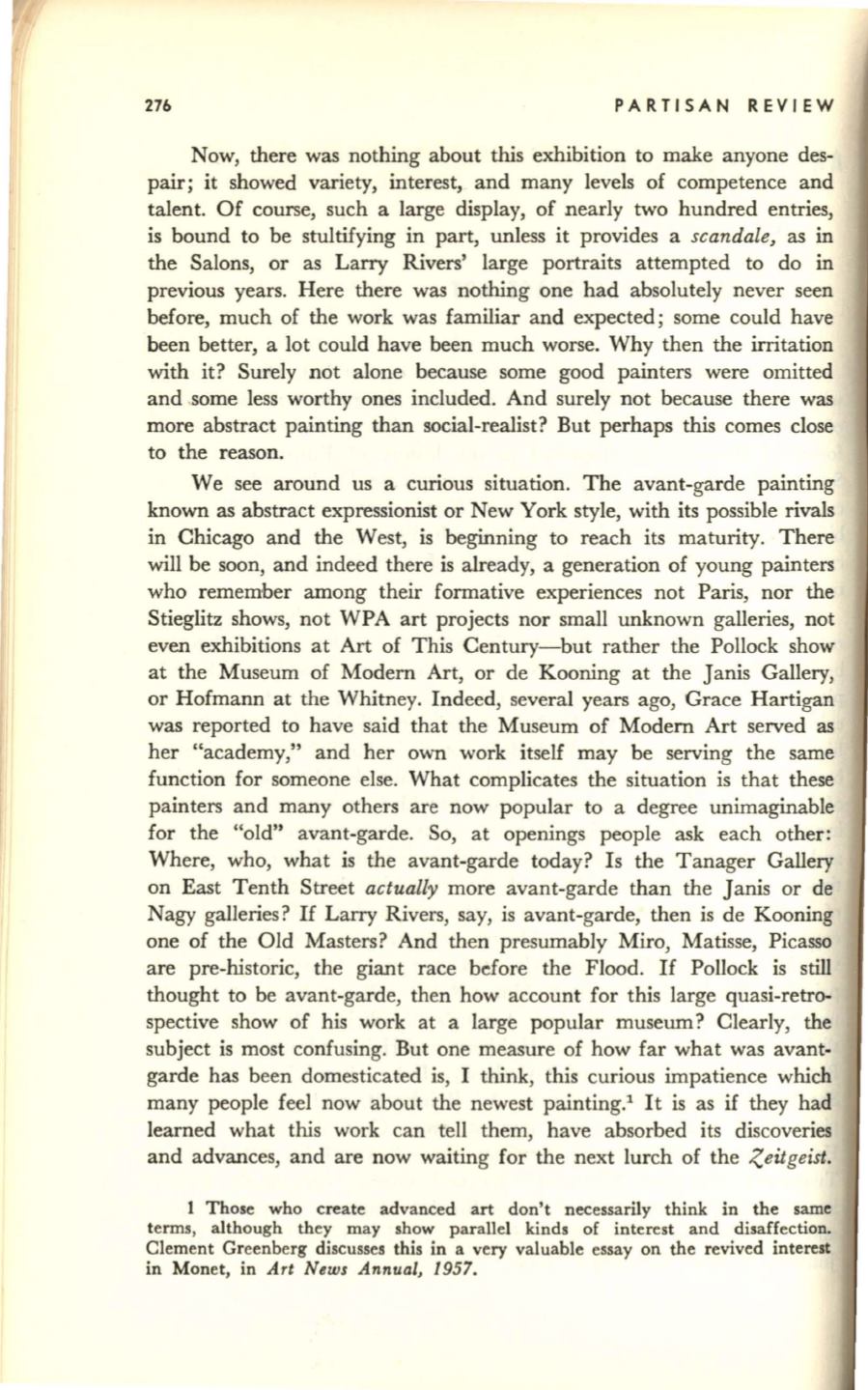
276
PARTISAN REVIEW
Now, there was nothing about this exhibition to make anyone des–
pair; it showed variety, interest, and many levels of competence and
talent. Of course, such a large display, of nearly two hundred entries,
is bound to be stultifying in part, unless it provides a
scandale,
as in
the Salons, or as Larry Rivers' large portraits attempted to do in
previous years. Here there was nothing one had absolutely never seen
before, much of the work was familiar and expected; some could have
been better, a lot could have been much worse. Why then the irritation
with it? Surely not alone because some good painters were omitted
and some less worthy ones included. And surely not because there was
more abstract painting than social-realist? But perhaps this comes close
to the reason.
We see around us a curious situation. The avant-garde painting
known as abstract expressionist or New York style, with its possible rivals
in Chicago and the West, is beginning to reach its maturity. There
will be soon, and indeed there is already, a generation of young painters
who remember among their formative experiences not Paris, nor the
Stieglitz shows, not WPA art projects nor small unknown galleries, not
even exhibitions at Art of This Century-but rather the Pollock show
at the Museum of Modem Art, or de Kooning at the Janis Gallery,
or Hofmann at the Whitney. Indeed, several years ago, Grace Hartigan
was reported to have said that the Museum of Modem Art served as
her "academy," and her own work itself may be serving the same
function for someone else. What complicates the situation is that these
painters and many others are now popular to a degree unimaginable
for the "old" avant-garde. So, at openings people ask each other:
Where, who, what is the avant-garde today? Is the Tanager Gallery
on East Tenth Street
actually
more avant-garde than the Janis or de
Nagy galleries?
If
Larry Rivers, say, is avant-garde, then is de Kooning
one of the Old Masters? And then presumably Miro, Matisse, Picasso
are pre-historic, the giant race before the Flood.
If
Pollock is still
thought to be avant-garde, then how account for this large quasi-retro–
spective show of his work at a large popular museum? Clearly, the
subject is most confusing. But one measure of how far what was avant–
garde has been domesticated is, I think, this curious impatience which
many people feel now about the newest painting.1 It is as if they had
learned what this work can tell them, have absorbed its discoveries
and advances, and are now waiting for the next lurch of the
Zeitgeist.
1 Those who create advanced art don't necessarily think in the same
terms, although they may show parallel kinds of interest and disaffection.
Clement Greenberg discusses this in a very valuable essay on the revived interest
in Monet, in
Art News Annual, 1957.


